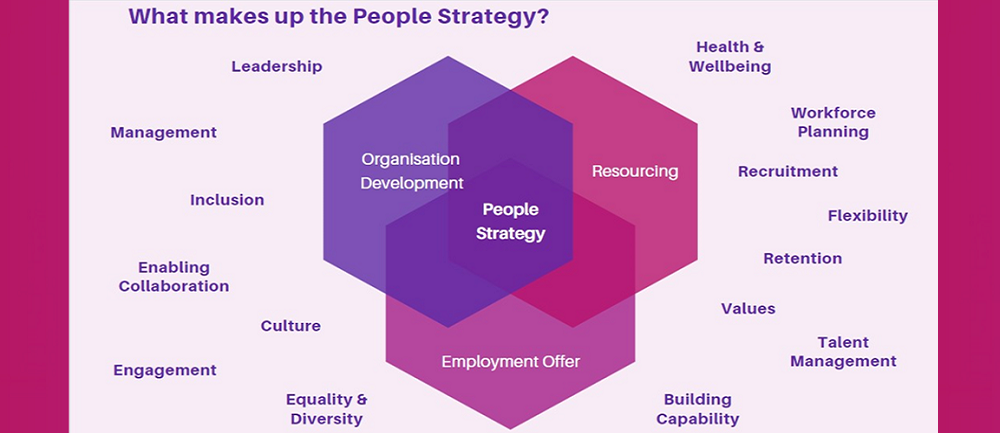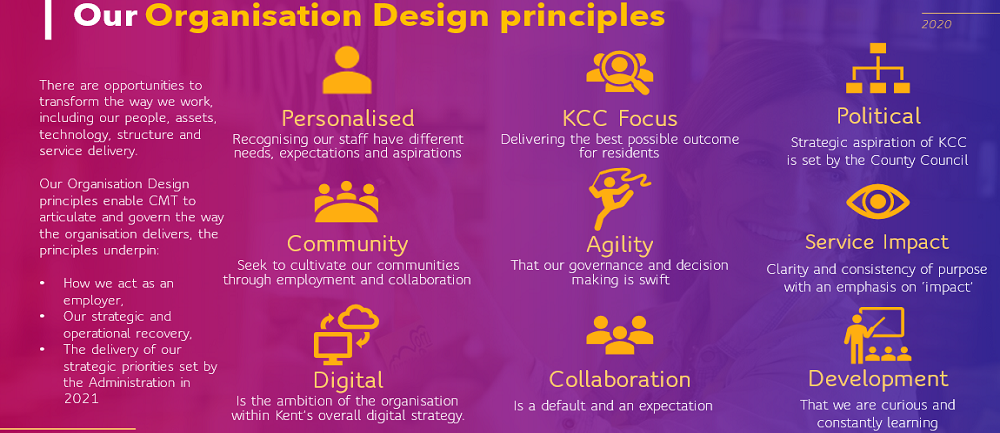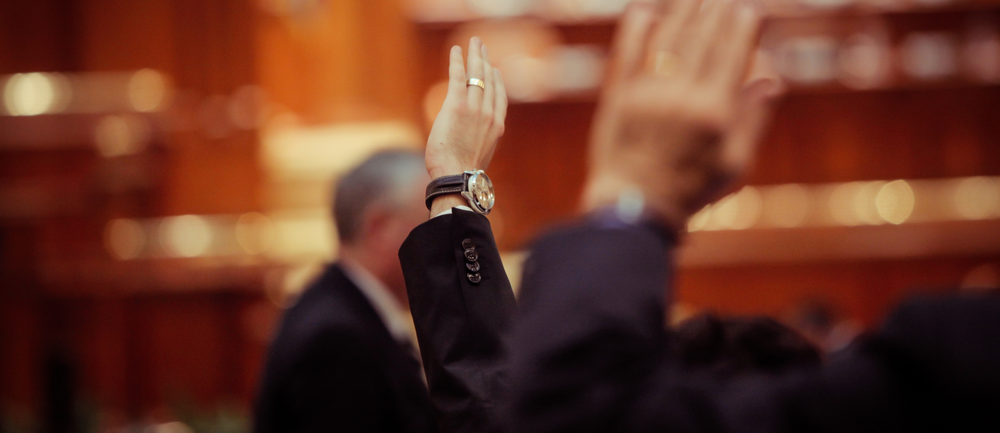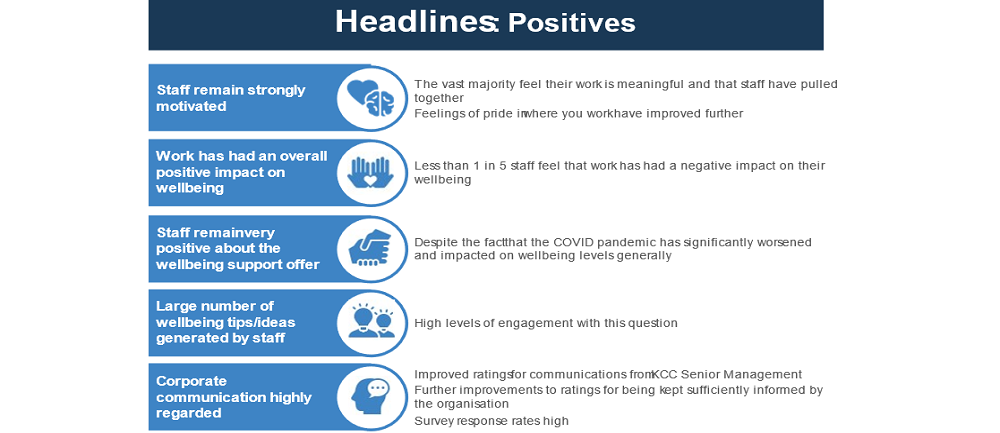-
Provided by

- Date published: Apr 20, 2021
- Categories
Organisations worldwide have had to readjust their strategies to overcome recent challenges; one such example is Kent County Council (KCC). The local authority has designed and is delivering an employer reset programme that will provide the context and evaluation baseline for the future of its people strategy, beyond recovery from the current pandemic. KCC’s workforce planning approach is helping to design its approach to resourcing, considering the innovations that can be drawn from apprenticeships and the new national kickstart programme. This involves redefining how KCC shapes roles for the future.
As part of this undertaking, KCC is routinely capturing staff feedback. This has helped KCC to understand experiences of working over the last year, and in turn, KCC has been able to target support for improvements to wellbeing, designing and defining how it will develop flexibility as its default position. By taking a holistic approach, KCC’s leaders and mangers have been given the tools and development to grow and share their learning and plan for the future.
In this case study, Paul Royel, head of HR & OD at Kent County Council, outlines the gains achieved in several areas, and the shape of strategy in the future.
Assessing the challenge
Given the disruptive conditions we were all operating under in the early summer of 2020, we had a decision to make.
Do we maintain the delivery of our established five-year people strategy (at that point in year three) and run a separate employer recovery plan, or do we combine our efforts, energy, and strategic capacity to deliver our critical requirements for recovery as part of a strategic ‘employer reset’? We went for the latter.
At a foundation level, this provided an opportunity to redefine our Organisation Design Principles – the basis for the way in which the organisation delivers its services and its culture and values. It was critical that we did not move forward with revised strategic aims for our services with old thinking, attitudes, and processes.
This also meant selecting critical elements of our existing people strategy and reviewing our OD strategy to ensure both the HR & OD elements could be integrated and were fully aligned.
This approach worked to draw together our culture, values, leadership traits and management capabilities, with our strategy to build resourcing capacity and our employment offer.
Taking a holistic view of our people strategy means that our goals and ambitions as an employer are set/endorsed by the corporate management team and supported by the right development and management conversations.
Devising a solution
As stated, our first step was to review and redefine our Organisation Design Principles. These nine critical elements run throughout our subsequent engagement and development planning, a significant and important step to ensure an integrated approach to building advocacy from our corporate management team out.

Maintaining a clear connection in our engagement roles and structures within HR & OD also means that awareness and dependency mapping can be maintained and managed. These roles and the support structure around them are critical to ensure the work we do is embedded, sustainable and well understood by the business.
We have:
- Defined our management capabilities and redesigned management learning.
- Created staff development workshops and delivered briefing sessions for staff and managers.
- Developed new mechanisms to support recruitment and selection.
- Defined principles and standards for flexible working in the future.
- Designed work and wellbeing surveys across 2020/21, created survey-influenced wellbeing tools, and devised a wellbeing action plan for the whole organisation.
- Re-engaged staff groups with the development of an enriched D&I agenda and conversation.
- Delivered inclusive leadership action learning sets and delivered leadership roundtable conversations in support of recovery.
- Created and tested management team workforce planning tools, and devised new mechanisms for supporting HR case activity virtually.
- Created an integrated evaluation framework for the revised people strategy.
Embracing feedback and innovation
The three significant programmes of note, linked to people strategy are the delivery of the work and wellbeing staff survey, the development of the workforce planning tools and defining future flexible working.
Our staff survey was bought in house three years ago. Over the last year, during the pandemic, we have used the requirements of our core staff survey to measure staff engagement, wellbeing and organisation connection. We did this to design a survey focusing on how our people are coping with the management of their wellbeing whilst working through the pandemic.
We have delivered three of four surveys and associated action plans from May 2020, with the final survey intended for June/July 2021. Each action plan has enabled us to refine and target our wellbeing offer and ensure a broad range of learning, support and engagement could be accessed, including mobilising our coaching network to provide targeted support. The analytical approach we have taken has meant our response has been evidenced based and can continually be reviewed and tested as we survey the staff again.

The analysis of need for the workforce planning tools was undertaken in 2019 and, over the last 18 months, we have designed an approach to workforce planning that will empower managers. They will be able to connect to their staff data, explore critical roles and talent management, alongside opportunities to explore wider resourcing of their service, including through apprenticeships.
The approach has been tested at scale with our adult social care directorate and with targeted teams in our highways and transportation division. The approach allows our HR&OD teams to work with managers to frame support, advice, and guidance holistically and in the context of our wider resourcing strategy.
This approach will continue to be tested and reviewed to provide the baselines of evidence for our resource management approach. The dynamic nature of our working environment and likely direction makes this medium term planning even more critical.
On flexible working, there is an undoubted need to set longer term standards and expectations for our current and future workforce. This has been undertaken with internal design/development, external benchmarking but not limited by our existing office estate. The role of managers is critical in making the transition to a different working environment, which is why this has been specifically identified along with associated management expectations and development programme. The culture will be driven by the behaviour of managers and staff.

Focusing on people during the strategic reset
We have placed our people strategy at the heart of delivering our strategic reset. Recognising that enabled our staff to define new approaches to their work that will support us to deliver our strategic ambitions. We have shared and managed:
- The importance of the alignment between the employer reset and changing service demand.
- Presenting a consistently strong evidence base for our approach.
- Designing whole organisation interventions and action plans that can be adapted to meet individual directorate demands and identity.
- Created communication and engagement approaches that position our board/corporate management team with the leadership voice that is evaluated and measured to show impact.
- Reflected reality, created mechanisms for support and tools that can be applied practically.
- Provided feedback mechanism so that open conversations are supported and encouraged.
- Presented with clarity and consistency – all our work stems from the core spine of our design principles and can be tracked back to this approach.
Quantifying strategic success
We are happy to share the approach we have taken to our staff survey data and action planning.
We had 4,070 responses in our third wave, equating to a 43% response rate, which is up on the 40% we had in October, but lower than the 52% we had in the first wave. We have conducted some detailed analysis of protected characteristic profiles to investigate potential non-response bias and are satisfied that there is no cause for concern in this respect. Our survey has illustrated the incredible resilience and commitment of our staff, and highlighted those individual and areas of the organisation where we needed to pay particular attention.
Outlined below for context are the positive headlines from the third survey wave.

Key findings for the future
The work is ongoing – are we delivering? Yes. Do we have traction with our leadership team? Absolutely. Do we have more to do? Without doubt – we are introducing new approaches to the work we do on a continual basis.
However, we have established the principles, standards, tools and processes that will provide the basis for the evolution of our workforce. We have created the engine to drive the organisation towards its aspirations, with sufficient flexibility to adapt as either our internal or external situation alters.
The ‘core’ of our HR & OD offer is very clear, coherent and designed to enable managers, services, directors and the organisation overall to achieve its aims. What we are increasingly in a position to now do is demonstrate that with an integrated narrative on the contribution of our function.
For the staff survey elements, we need to develop routine mechanisms for gathering whole organisation qualitative feedback through deliberative means, such as workshops or face to face surveys/deep dives. We have several engagement mechanisms to do that but talk about those far less than we talk about the quantitative measures.
We must not underestimate the need for repeated and consistent messages. We have maintained an approach that focuses on instruction, support, intervention and action. This drumbeat has yielded good level of engagement and organisation advocacy and needs maintenance in the long term if leadership channels are to be trusted.
The value of upward pressure, engaging staff to drive some of their conversations with managers. This has been particularly valuable in developing our approach to flexible working.
The significance of clarity and a need to avoid over complication or ‘over-layering’. Maintaining the connection to our design principles provides context and rationale for our approach to this work.

